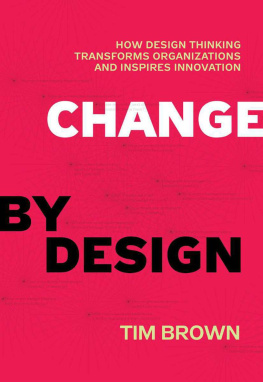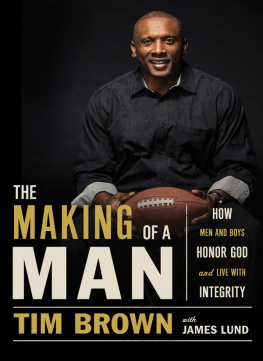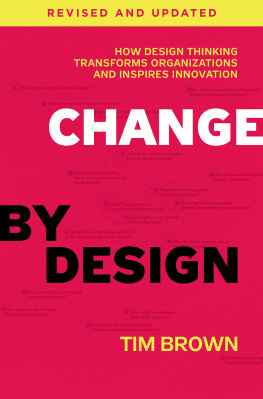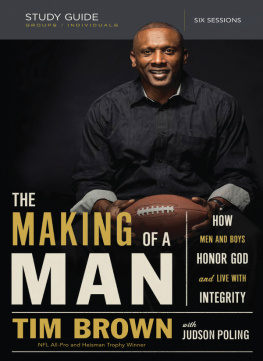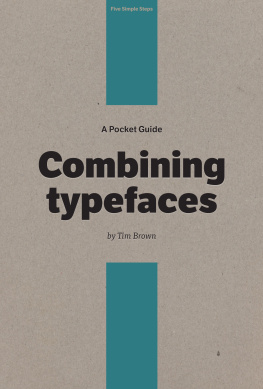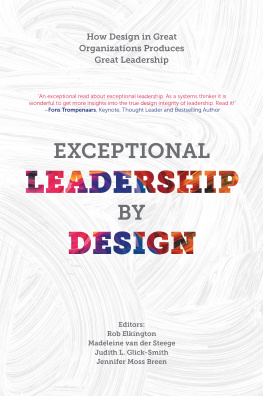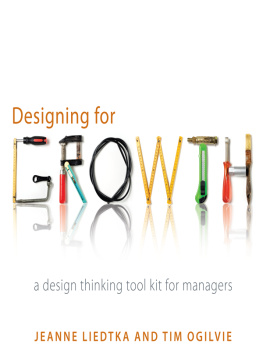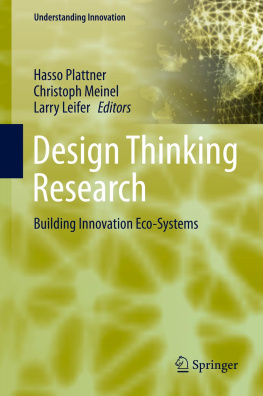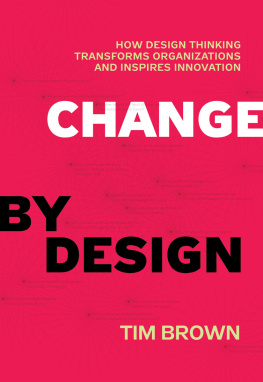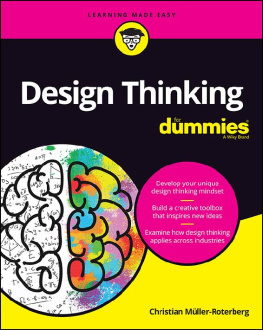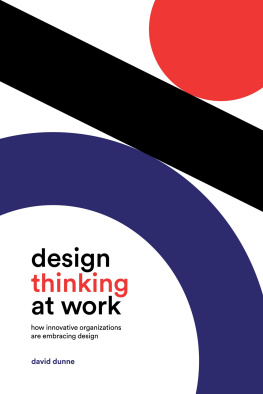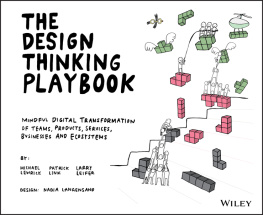How Design Thinking Transforms Organizations and Inspires Innovation
Change by Design
Tim Brown with Barry Katz

To Gaynor
Contents
The Power of Design Thinking
What is Design Thinking?
Getting Under Your Skin, or How Design Thinking is About More Than Style
Converting Need into Demand, or Putting People First
A Mental Matrix, or These People Have No Process!
Building to Think, or The Power of Prototyping
Returning to the Surface, or The Design of Experiences
Spreading the Message, or The Importance of Storytelling
Where Do We Go From Here?
Design Thinking Meets the Corporation, or Teaching to Fish
The New Social Contract, or Were All in This Together
Design Activism, or Inspiring Solutions with Global Potential
Designing TomorrowToday
the power of design thinking
an end to old ideas
Practically everyone who has visited England has experienced the Great Western Railway, the crowning achievement of the great Victorian engineer Isambard Kingdom Brunel. I grew up within earshot of the GWR, and as a child in rural Oxfordshire I often bicycled alongside the line and waited for the great express trains to roar past at more than one hundred miles an hour. The train ride is more comfortable today (the carriages now sport springs and cushioned seats) and the scenery has certainly changed, but a century and a half after it was built the GWR still stands as an icon of the industrial revolutionand as an example of the power of design to shape the world around us.
Although he was the engineers engineer, Brunel was not solely interested in the technology behind his creations. While considering the design of the system, he insisted upon the flattest possible gradient because he wanted passengers to have the sense of floating across the countryside. He constructed bridges, viaducts, cuttings, and tunnels all in the cause of creating not just efficient transportation but the best possible experience. He even imagined an integrated transport system that would allow the traveler to board a train at Londons Paddington Station and disembark from a steamship in New York. In every one of his great projects Brunel displayed a remarkableand remarkably prescienttalent for balancing technical, commercial, and human considerations. He was not just a great engineer or a gifted designer; Isambard Kingdom Brunel was one of the earliest examples of a design thinker.
Since the completion of the Great Western Railway in 1841, industrialization has wrought incredible change. Technology has helped lift millions out of poverty and has improved the standard of living of a considerable portion of humanity. As we enter the twenty-first century, however, we are increasingly aware of the underside of the revolution that has transformed the way we live, work, and play. The sooty clouds of smoke that once darkened the skies over Manchester and Birmingham have changed the climate of the planet. The torrent of cheap goods that began to flow from their factories and workshops has fed into a culture of excess consumption and prodigious waste. The industrialization of agriculture has left us vulnerable to natural and man-made catastrophes. The innovative breakthroughs of the past have become the routine procedures of today as businesses in Shenzhen and Bangalore tap into the same management theories as those in Silicon Valley and Detroit and face the same downward spiral of commoditization.
Technology still has not run its course. The communications revolution sparked by the Internet has brought people closer together and given them the opportunity to share perspectives and create new ideas as never before. The sciences of biology, chemistry, and physics have merged in the forms of biotechnology and nanotechnology to create the promise of lifesaving medicines and wondrous new materials. But these spectacular achievements are unlikely to help us reverse our ominous course. Just the opposite.
we need new choices
A purely technocentric view of innovation is less sustainable now than ever, and a management philosophy based only on selecting from existing strategies is likely to be overwhelmed by new developments at home or abroad. What we need are new choicesnew products that balance the needs of individuals and of society as a whole; new ideas that tackle the global challenges of health, poverty, and education; new strategies that result in differences that matter and a sense of purpose that engages everyone affected by them. It is hard to imagine a time when the challenges we faced so vastly exceeded the creative resources we have brought to bear on them. Aspiring innovators may have attended a brainstorming session or learned a few gimmicks and tricks, but rarely do these temporary placeholders make it to the outside world in the form of new products, services, or strategies.
What we need is an approach to innovation that is powerful, effective, and broadly accessible, that can be integrated into all aspects of business and society, and that individuals and teams can use to generate breakthrough ideas that are implemented and that therefore have an impact. Design thinking, the subject of this book, offers just such an approach.
Design thinking begins with skills designers have learned over many decades in their quest to match human needs with available technical resources within the practical constraints of business. By integrating what is desirable from a human point of view with what is technologically feasible and economically viable, designers have been able to create the products we enjoy today. Design thinking takes the next step, which is to put these tools into the hands of people who may have never thought of themselves as designers and apply them to a vastly greater range of problems.
Design thinking taps into capacities we all have but that are overlooked by more conventional problem-solving practices. It is not only human-centered; it is deeply human in and of itself. Design thinking relies on our ability to be intuitive, to recognize patterns, to construct ideas that have emotional meaning as well as functionality, to express ourselves in media other than words or symbols. Nobody wants to run a business based on feeling, intuition, and inspiration, but an overreliance on the rational and the analytical can be just as dangerous. The integrated approach at the core of the design process suggests a third way.
swimming upstream
I was trained as an industrial designer, but it took me a long time to realize the difference between being a designer and thinking like a designer. Seven years of undergraduate and graduate education and fifteen years of professional practice went by before I had any real inkling that what I was doing was more than simply a link in a chain that connected a clients engineering department to the folks upstairs in marketing.
The very first products I designed as a design professional were for a venerable English machinery manufacturer called Wadkin Bursgreen. The people there invited a young and untested industrial designer into their midst to help improve their professional woodworking machines. I spent a summer creating drawings and models of circular saws that were better looking and spindle molders that were easier to use. I think I did a pretty good job, and its still possible to find my work in factories thirty years later. But you will no longer find the Wadkin Bursgreen company, which has long since gone out of business. As a designer I didnt see that it was the future of the woodworking industry that was in question, not the design of its machines.
Next page
